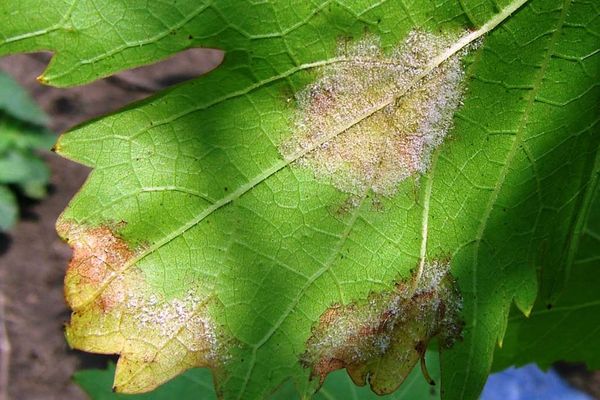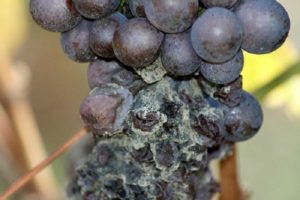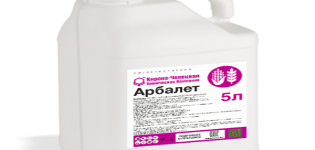Description and characteristics of sustainable Cardinal grapes and cultivation
The Cardinal grapes have a wayward character. But experienced gardeners who have created all the right conditions for the growth and ripening of fruits will be rewarded as they deserve. The table variety is distinguished by its sweet nutmeg flavor and transportability.
Breeding history of the variety
The Cardinal grape variety comes from the distant sunny American California, where in 1939 it was experimentally bred in the city of Fresno by doctors Snyder and Harmon. Years later, grapes were transported to Europe, to southern countries.
Description of grapes Cardinal
An early table grape variety. The ripening period ranges from 115 to 120 days, the harvest takes place at the end of August. The variety is extremely fruitful, but with the amendment that keeping conditions will be met.
When describing Cardinal, it is worth mentioning that the variety is not resistant to fungal diseases. The bunches are large, but loose. The berries are reddish-purple in color, oval or semi-oval. The mass of one berry is within 6 grams, with several seeds. On the palate, there is a spicy nutmeg note that sets off the main sweetness. Sugar content - from 16% to 18%, acidity - 8 grams per liter.
Species diversity
On the basis of the Cardinal grape variety, scientists have developed three improved subspecies: Lux, Azos and Black.

The "second parent" of Lux was the Criulyansky variety. The subspecies is more resistant to disease and frost. But the ripening period increased, and amounted to 125 days. The subspecies is distinguished by high growth rates of the bush and heavy bunches, sometimes reaching one kilogram.
The Anapa variety Azos is able to withstand frosts down to -23 degrees, actively resists fungal diseases. It matures in 130 days. Differs in a cone-shaped bunch - they are very heavy by weight. The taste is sweet, with a pronounced nutmeg aftertaste. Fruit color ranges from pink to dark blue with a black tint.
What are the pros and cons of the variety?
The advantages of this grape variety are:

- Taste appreciated (8-9 points).
- The versatility of the variety - grapes can be used for many purposes.
- Transportability, long-term storage.
- Quality wine made from this variety.
- A bountiful harvest.
- Ripening speed.
To evaluate the Cardinal, you need to know about the shortcomings:
- Disease predisposition.
- Heat-loving plant, does not tolerate low temperatures
- In order for the harvest to succeed, ideal conditions are needed.Otherwise, the flowers and ovaries will fall off, the berries can be peas, their size decreases.
- The bunch ripens unevenly, and therefore some side always remains unripe.
Landing features
Cardinal grapes love warmth, so analyze your garden area and choose a location that is full of sun and protected from the winds. Often this place is located south of the house or other buildings.

It is advisable to plant in black soil, since it is the most saturated with nutrients, but cultivation in clay or sandy soils is also possible.
Important! The sand should have a temperature not higher than 10 degrees.
Productivity will increase if you graft the cutting into a perennial vine. In this way, immunity against diseases can also be increased.
Planting is best done in spring, when there is no risk of recurrent cold weather.
Care advice
The most suitable soil for Cardinal is black soil. But, being planted on loamy or sandy loam soil, it also gives a good harvest. Control the amount of moisture you consume. It is necessary not to be greedy with watering, but in moderation so as not to overflow the plant. Having received excess water, the fruits will become too watery and begin to burst. Water before and after flowering. In the same period, treat the plant with fungicidal solutions, protecting the bush from powdery mildew.

Important! If summer is rainy, install a drainage system to remove excess water. Otherwise, the plant may undergo diseases.
Mulch the plant twice a year: in autumn and spring. Pay attention to the need for particularly careful protection of the bush and root system during preparation for wintering. Use available tools such as mulch, hay, and straw. If the grapes are facing the first winter, place the vine in a wooden container without a bottom, and cover the top with earth. This will allow the plant to survive at low temperatures.
Diseases and pests
Diseases often affect the Cardinal. The reason lies in the fact that the variety was bred on another continent, and is not adapted to the climatic conditions of our continent. Often the plant infects mildew, gray rot, oidium, bacterial cancer, bunny leafworm. Basically, this happens in the fall, when the harvest is already harvested.

Preventing a disease is easier than curing it. Spray with fungicides before and after flowering, twice a season. If the plant is still sick, additional spraying is needed.
Where is the best place to grow?
The most acceptable regions among the countries of the former USSR for cultivation are warm regions with black soil.
These include the south of Russia (Krasnodar Territory), the Ukrainian steppes, Moldavia, Transnistria. Among the European states are France, Greece, Italy, Spain, Yugoslavia.









